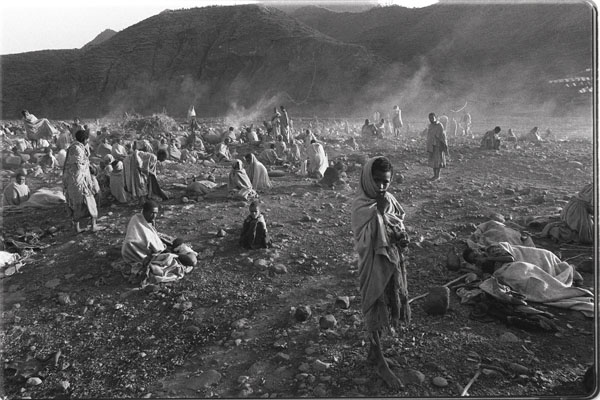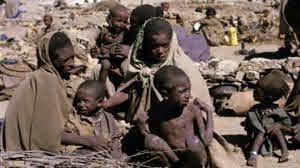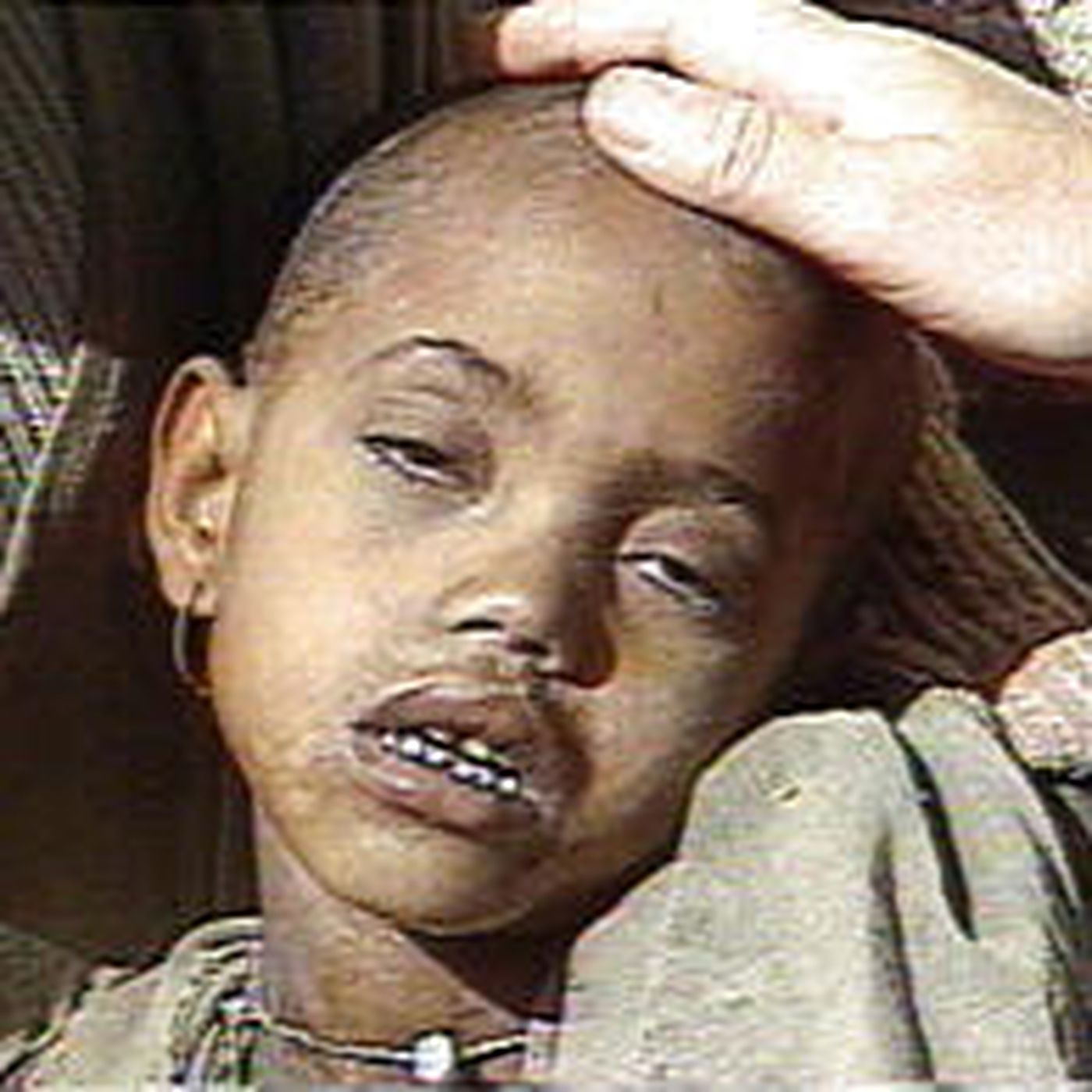The Crisis
The Drought and The Famine
Due to the Ethiopian Civil War and a lack of rainfall, drought plagued Ethiopia and left them devastated with poor harvests. With some areas being inaccessible, organizations were unable to aid those in need, thus leading to conflicts which damaged the economy.
"The 1980s Ethiopia famine and hunger crisis was one of the worst humanitarian events of the 20th century, prompting a global response to bring food assistance and save lives. Ethiopia’s food shortages and hunger crisis from 1983 to 1985 led to an estimated 1 million famine deaths, according to the United Nations. Millions more were displaced and left destitute, without resources to rebuild their lives" 1980s Ethiopia famine: Facts, FAQs, and how to help, Kathryn Reid, 2018.
"More than seven million people face starvation in Ethiopia, where the worst drought in a decade has left rivers dry and turned the nation's breadbasket into a dust bowl. A report by the United Nations Children's Fund, issued at its regional headquarters here, said parts of northern Ethiopia had had no rain or food harvest in at least 10 years"
- DROUGHT IS SAID TO THREATEN LIVES OF 7 MILLION IN ETHIOPIA, The New York Times, 1984.
Corrupt Military Rule and a Lack of Government Stabilization
During this time Ethiopia ran under military rule and much of the citizen's actions were dictated by the military. Government intervention was necessary, however, instead of helping citizens, the military attempted to combat them. Furthermore, in attempts to solve the famine crisis, the "government" relocated citizens away from it, however, this didn't do much and the famine continued and many died from forced resettlement.
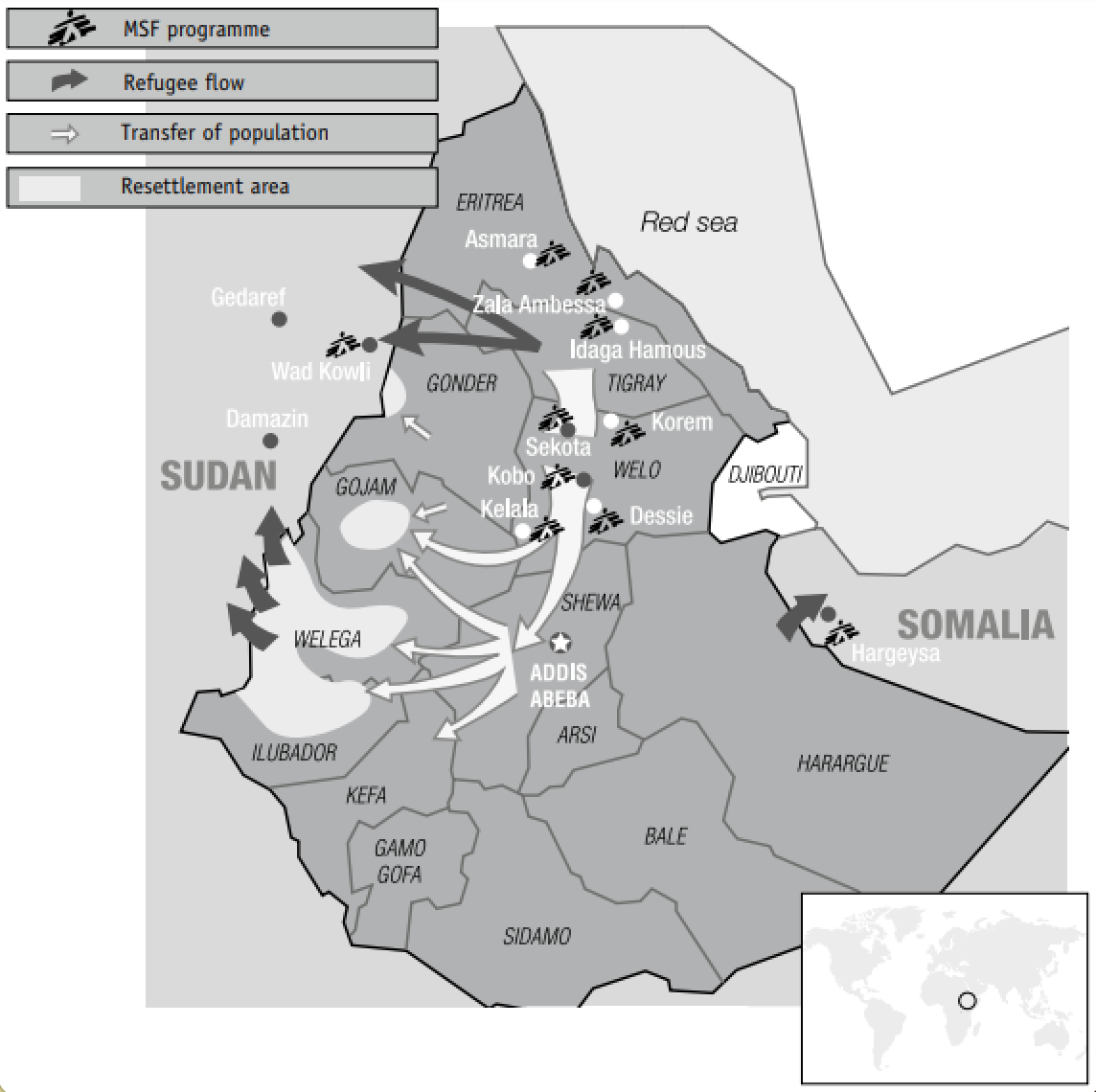
MSF Programmes in Ethiopia from 1984-1986, Medecins Sans Frontieres, 2005.
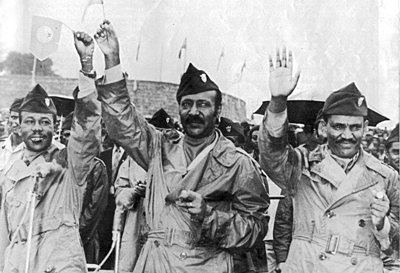
Mengistu Haile Mariam, Tafari Benti, and Atnafu Abate waving to individuals of the crowd, ANDARGACHEW TIRUNEH, 1976.
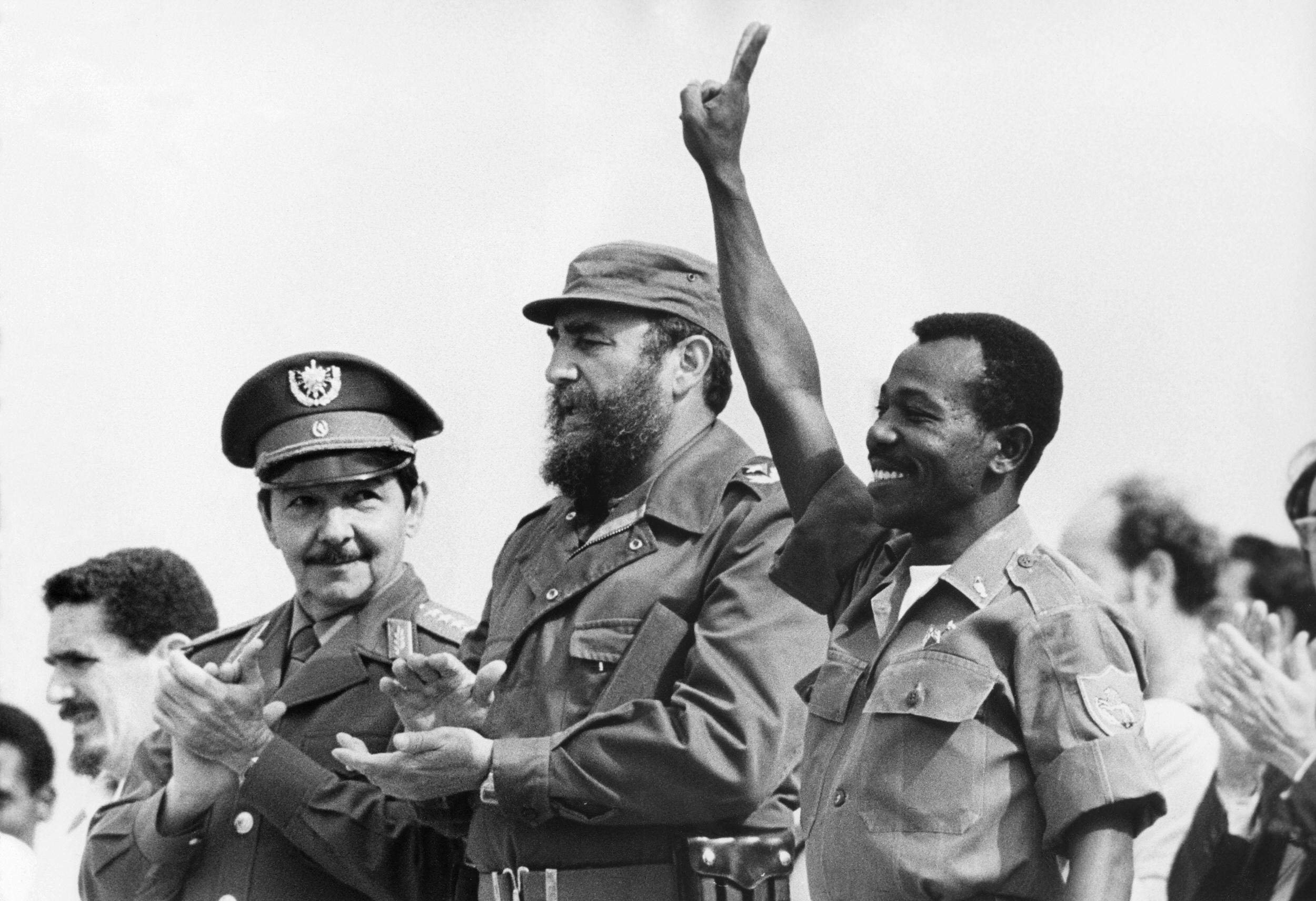
Mengistu Haile Mariam saluting as the leader of Ethiopia during the Ethiopian crisis, getty images, 1978.
"A defector who formerly headed Ethiopia's food relief effort says that his Government's policies, as much as drought, were responsible for the catastrophic Ethiopian famine of 1984 and 1985. And, the former official asserted, these policies threaten to cause continuing starvation in the future"
''Drought only complicated the situation. If there is no change in our policies, there will always be millions of hungry people in Ethiopia''
Clifford D. May, The New York Times, 1986.
"The government plan involved villagization, which was a response not only to the famine but also to the poor security situation. Beginning in 1985, peasants were forced to move their homesteads into planned villages, which were clustered around water, schools, medical services, and utility supply points to facilitate distribution of those services"
Ethiopia in Crisis: Famine and Its Aftermath, Library of Congress, 1984.
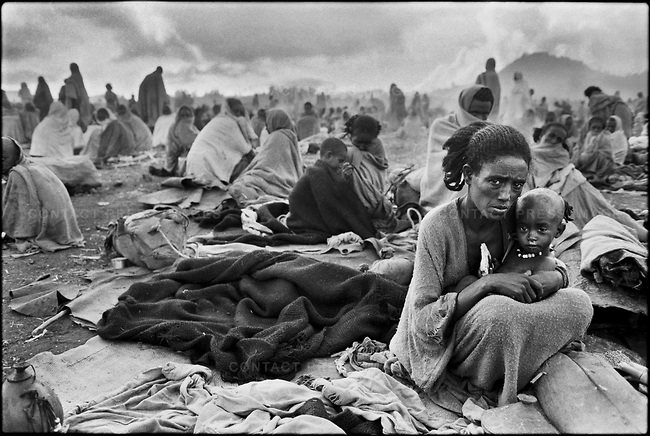
Woman and Child relocated in barren land, Constantine Report, 2014.
"Additionally, the government in most cases failed to provide the promised services. Several human rights organizations claimed that tens of thousands of peasants died as a result of forced resettlement. Far from benefiting agricultural productivity, the program caused a decline in food production. Although temporarily suspended in 1986, villagization was subsequently resumed"
Ethiopia in Crisis: Famine and Its Aftermath, Library of Congress, 1984.
"Despite outward appearances, little changed in the way the country was actually run. Old Derg members still were in control, and the stated mission of the WPE allowed continued close supervision by the government over much of the urban population."
Ethiopia in Crisis: Famine and Its Aftermath, Library of Congress, 1984.
No one at this time knew about the crisis going on in Ethiopia and they were suffering without the world ever knowing about what they were going through. They were left alone to deal with their own problems before aid came.
